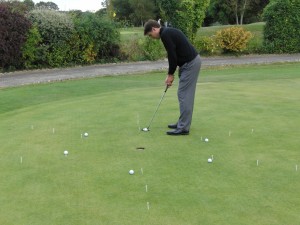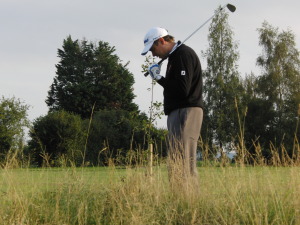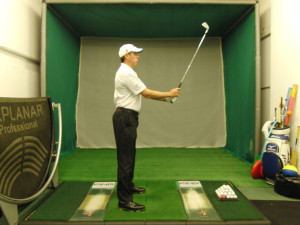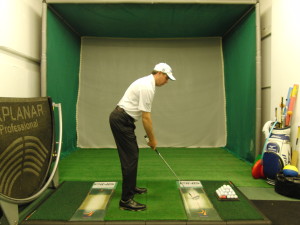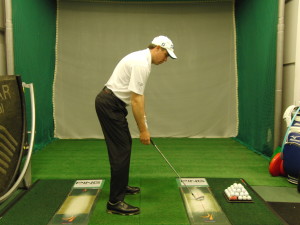Posts Tagged ‘Golf Lesson Kent’
Putt With Your Ears to Hole More Putts
Putt With Your Ears to Hole More Putts
When you and your golfing friends play together, you give each other far to many short putts. The normal agreement is if its within half a putter length then you can pick it up, its a gimme!! Gimmes might feel great, but the only problem with that is that when you get in a round of golf that really matters and you have to putt everything out, you’re probably scared to death.
That fearful feeling normally results in a early peek at the hole—an attempt to Go in! Please go in! It causes the eyes to twitch and the head to move, the shoulders to open—and now the putterface and path could be pointing anywhere. You’re lucky to hit the hole.

Here is what you need to do to hole more of those short little putts:
- Keep your eyes quiet and looking down
- Give the ball a nice, firm strike.
- The putt’s probably not going to break, so aim the face straight at the hole and make sure you see it hit the ball.
- If you get in a habit of staying down and listening for the ball to drop, you’ll be automatic on these little putts.
From Your Friends at Mark Wood Golf Academy
PS. Come down and tee it up to make some magic moments of your own. Check our website at
Mark Wood
PGA Advanced Professional
UK’s No1 Golf Coach
The Best Golf Lessons in Sussex and Kent
Escape the Rough
Getting back to the fairway should be your priority
If you are in the thick deep rough think about just advancing your ball down the fairwary. Choose a club with decent loft, pitching wedge or 9 iron would be great, and set up with the face pointing slightly right of your target. The reason for doing this is there is a strong tendency for the face of the club to close when grass wraps around the hosel at impact. Also gripping the club a little tighter with your left hand will reduce the amount of clubhead twist.
Pick the club up steeply in the backswing, and swing down with your wrists staying firm—no scooping to try to help dig the ball out. These adjustments will help you power through the thick grass.
From Your Friends at Mark Wood Golf Academy
PS. Come down and tee it up to make some magic moments of your own. Check our website at
Mark Wood
PGA Advanced Professional
UK’s No1 Golf Coach
The Best Golf Lessons in Sussex and Kent
Well Done Monty (Back to Back Majors)
Colin Montgomerie’s Winning Weapons!!
Equipment is accurate as of the U.S. Senior Open (7/13/14).
Driver: Callaway Big Bertha Alpha (9 degrees)
3 Wood: Callaway X2 Hot (15 degrees)
Hybrid: Callaway X2 Hot Pro (19 degrees)
Irons: Callaway Razr XF (4-PW)
Wedges: Cleveland 588 (52, 56 and 60 degrees)
Putter: Odyssey Versa 90 #7
Golf Ball: Callaway Speed Regime 3
From Your Friends at Mark Wood Golf Academy
PS. Come down and tee it up to make some magic moments of your own. Check our website at
Mark Wood
PGA Advanced Professional
UK’s No1 Golf Coach
The Best Golf Lessons in Sussex and Kent
Distance Control with your Irons
Distance Control with your Irons
One thing that Professionals and very good established amateurs do very well is the ability to control the distances that they hit their irons. They know to the exact yardage that they hit each club as this is what hitting greens in regulation is all about.
As an example it is no good hitting a 6 iron 153 yards and then the next one 174 yards as this will lead to confusion and inconsistency in hitting greens.
As a rule their is a 10 yard gap in between each iron.
Here is a video tip with Mark on distance control –
From Your Friends at Mark Wood Golf Academy
PS. Come down and tee it up to make some magic moments of your own. Check our website at
Mark Wood
PGA Advanced Professional
UK’s No1 Golf Coach
The Best Golf Lessons in Sussex and Kent
“How Far Should I Stand From the Ball”
“How Far Should I Stand From the Ball”
I get asked this question a lot and there is a real simple guide to this, I am going to show you my 3 favourite ways in dealing with this problem.
But first you need to bear in mind that your body shape and degree of flexibility will have an impact on this. As an example, if you are tall and thin you can stand quite upright. If you have a big chest and belly you need to stand further away from the ball with more forward tilt from the hips as this will give you room to swing your arms past your body.
Here’s one tip to help you determine the correct distance from the ball:
- Grip your 6 iron as normal.
- Hold the club out in front of you as seen in the photo below.
- Stand up tall with your upper arms connected to your chest and your feet shoulder width apart.
- Tilt forward from the pelvis, about 30 degrees is good.
- Let your arms hang vertically down until your club head touches the ground.
- Flex your knees just a little, just like your normal athletic posture.
Here’s two more ways to help you determine how far to stand from the ball.
Take your normal posture and set up position then take your right hand off the club. Now span out the four fingers of your right hand and that should fill the gap between your left thigh and the top of the grip.
Another way is to take your normal posture and set up position then take your right hand off the club and let your arm/hand hang down naturally. From there you should be able to swing it back across so it fits back onto the grip from where it came off.
From Your Friends at Mark Wood Golf Academy
PS. Come down and tee it up to make some magic moments of your own. Check our website at
Mark Wood
PGA Advanced Professional
UK’s No1 Golf Coach
The Best Golf Lessons in Sussex and Kent
The First Move
The Take Away
I am always being asked what initiates the backswing. I believe and teach that the first move away from the ball is more a upper body movement than the lower body movement. If you think of your shoulders, arms and hands as a unit, these move away from the ball together. You need to feel that the lower body resists, a good way to feel this is for you to keep your belt buckle as quite as possible during the early part of the takeaway.
A great check point in the takeaway is when the shaft of the club gets parallel to the ground, and it is a major important part of your swing, other than impact. I know how important it is to make a perfect set up as this gives you a great chance in making a good solid swing. If you get any parts of the set up wrong you will have to make compensations in the golf swing. The Perfect takeaway is a must because if you get the first part of the swing wrong you are going to have to compensate else where in the swing, not a great recipe for consistency in ball striking!!
Many times when I see a golfer with a faulty takeaway, they generally have major problems in there short irons, pitching and chipping. As it has been said many times before a pitching swing is a mini version of the full swing, so it becomes very important to get the takeaway correct.
To get the club moving away from the ball correctly, you need to swing the club back along the angle of the shaft. Not inside it or outside it but on it until the club head covers your hands and the shaft is parallel to the ground.

Good Position Clubhead covering the hands and shaft parallel
to the ground and target line.
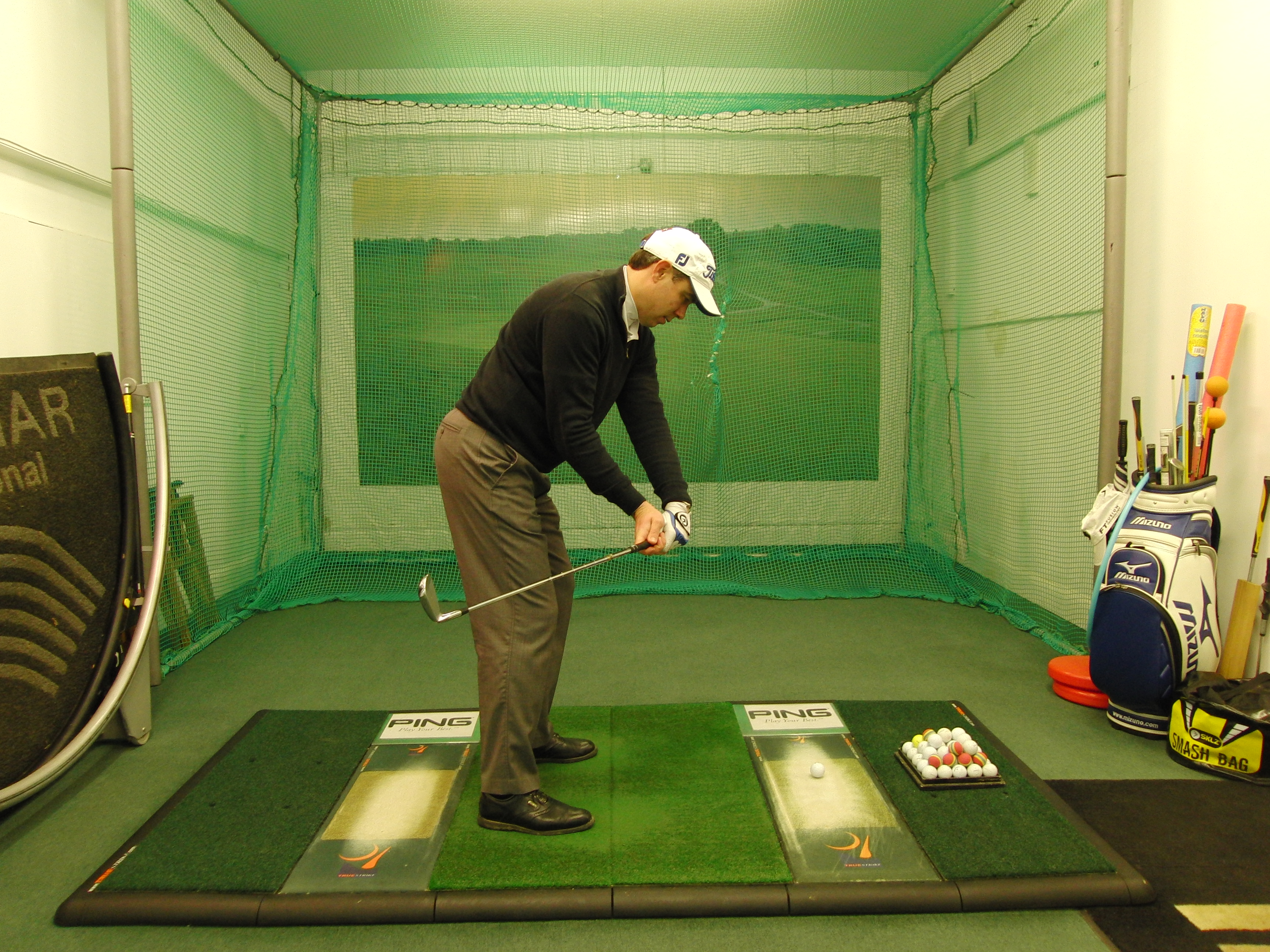
Bad takeaway where the right wrist has hinged back too
much on itself.
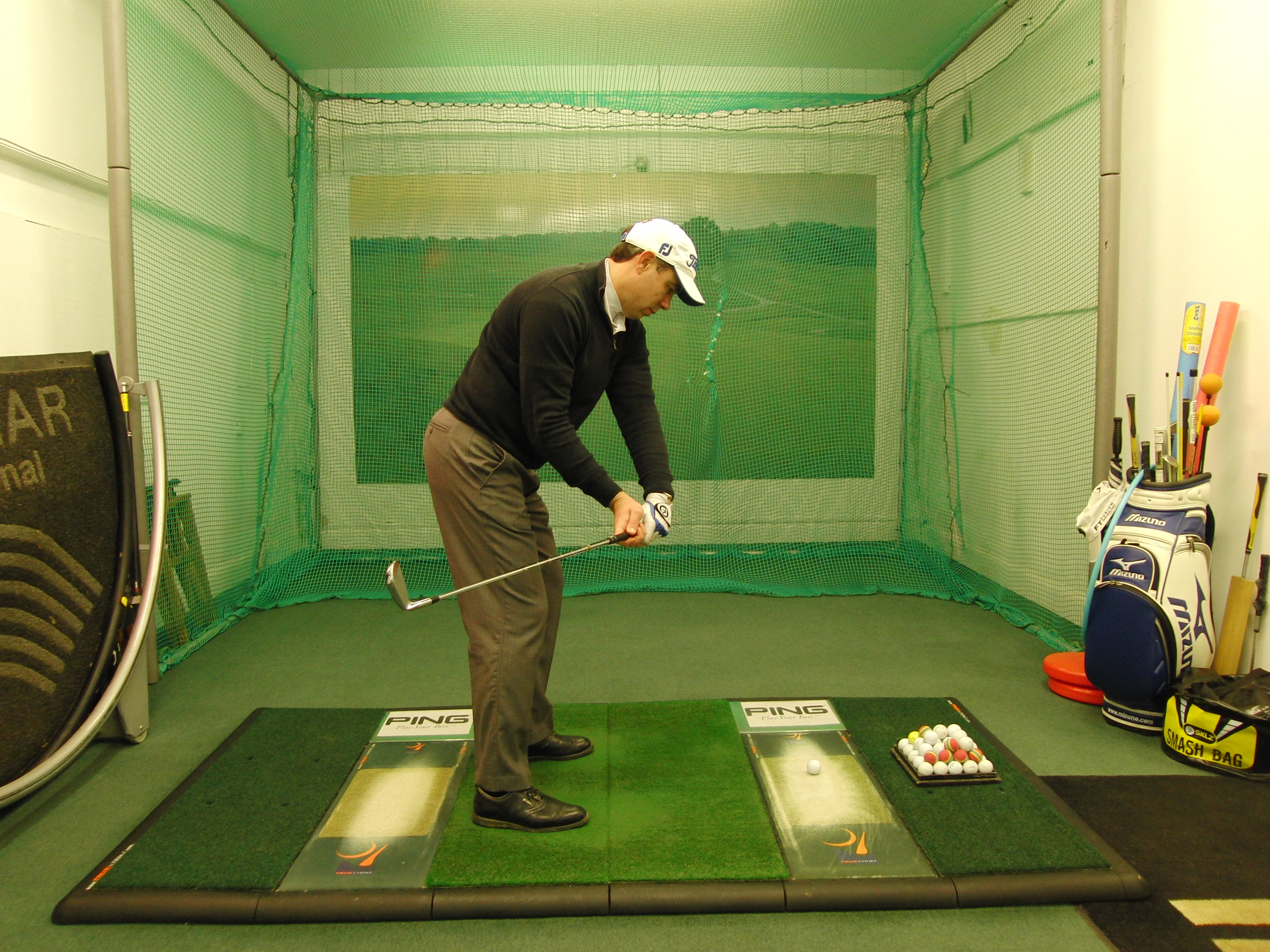
Bad takeaway where the left arm has rotated too much in
the takeaway separating from the chest.
Drills to practise to get the takeaway right every time.
Headcover under the left arm drill
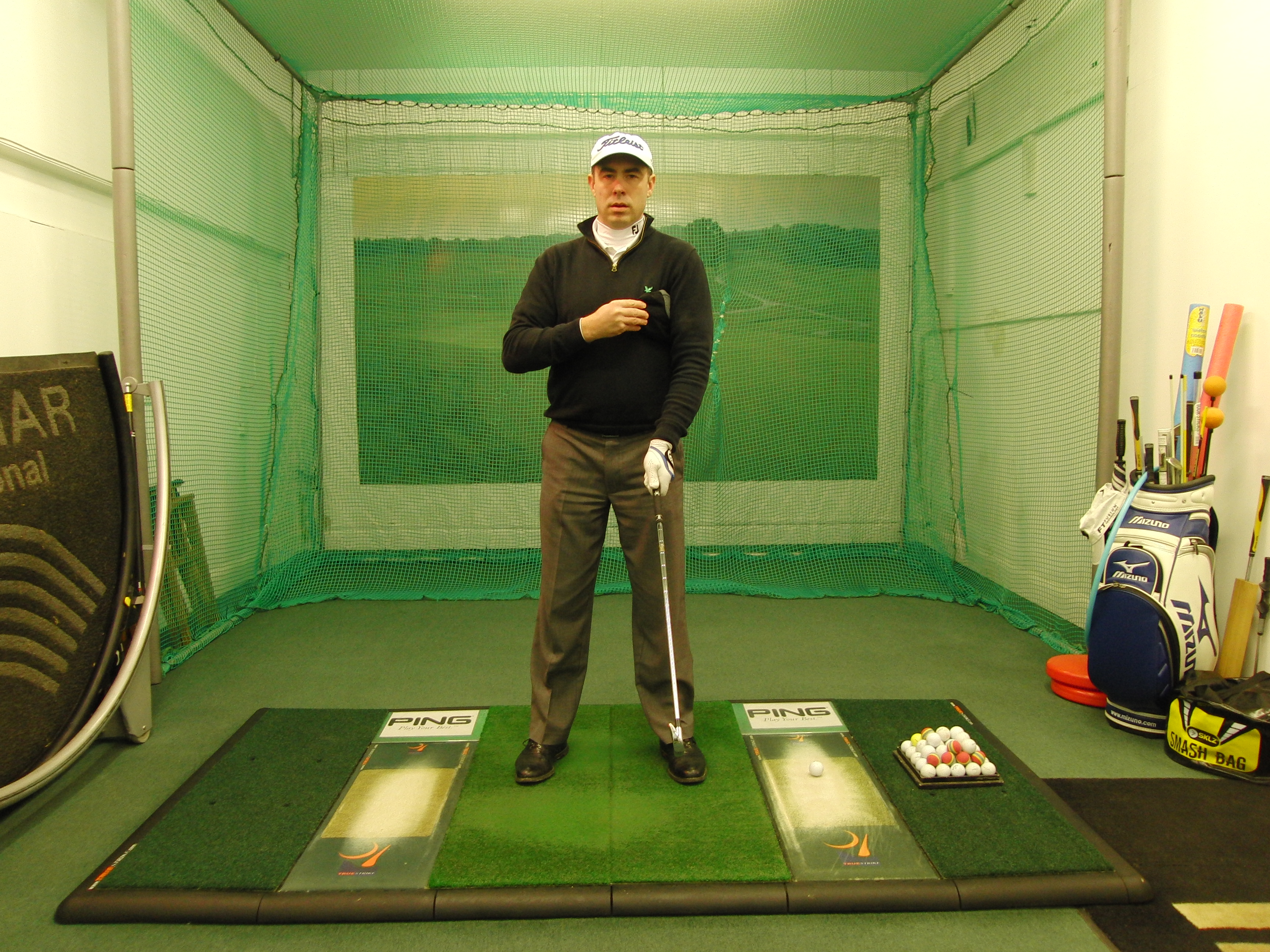
Place a headcover or glove under your left arm.
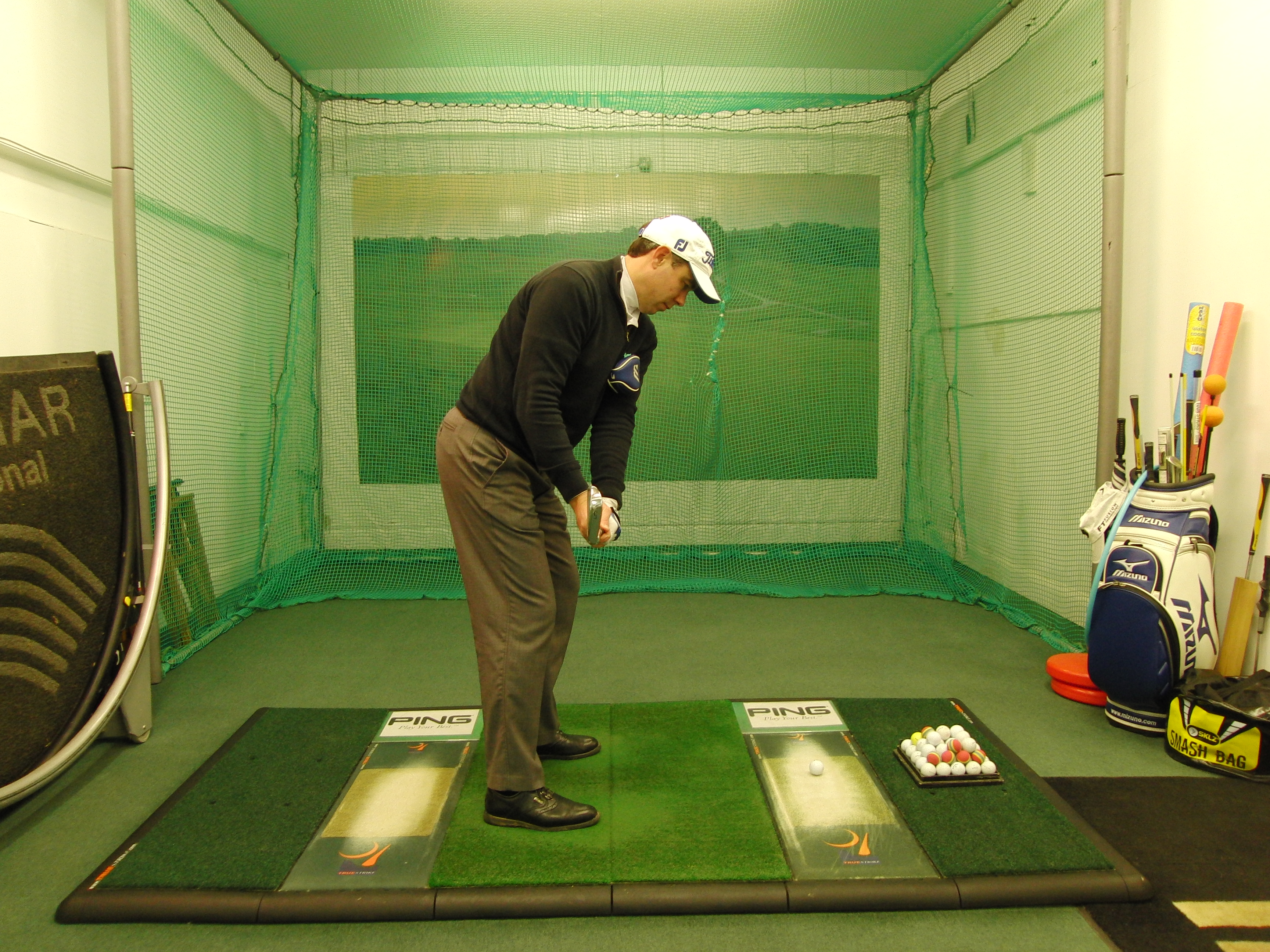
Make some swings back so that the shaft gets back parallel to
the ground this will keep you “connected” and as one unit.
Clubhead covering the hands.
Golf Ball Drill
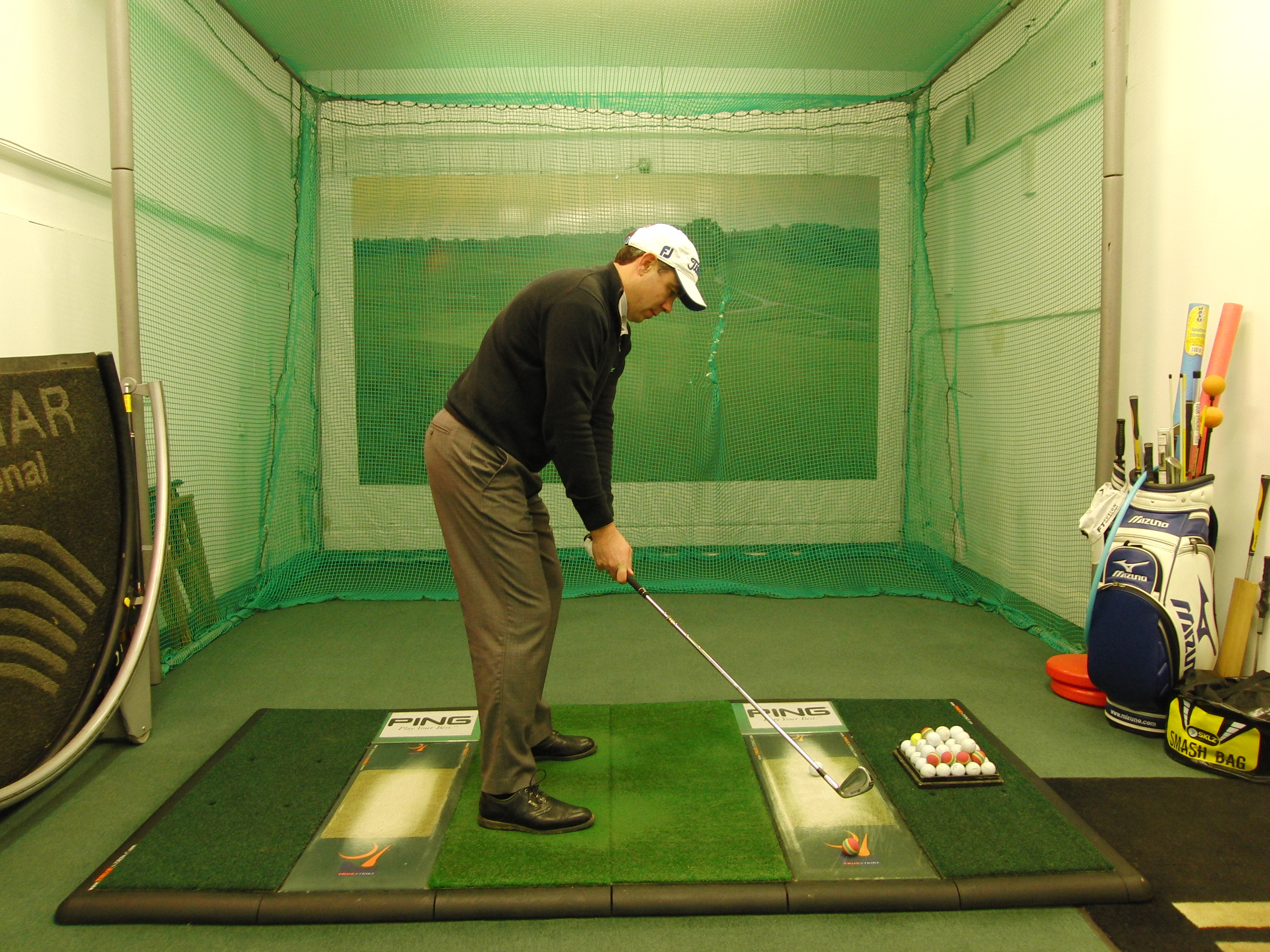
To stop the right wrist from hinging back on itself so early place a ball down 18 inches directly behind the ball you are going to strike. From here practise keeping the clubhead moving directly over the behind ball.
From Your Friends at Mark Wood Golf Academy
PS. Come down and tee it up to make some magic moments of your own. Check our website at
Mark Wood
PGA Advanced Professional
UK’s No1 Golf Coach
The Best Golf Lessons in Sussex and Kent
Wedges
Gene Sarazen Wedges
Before Gene Sarazen invented the sand wedge, most golfers played recovery shots from sand with a 9-iron. Because the blade was so sharp this required enormous skill, leaving little or no margin of error for any but the most talented player. Sarazen came up with his idea for a sand wedge while he was a passenger on an airplane one day. He noticed how the wing flaps affected the flight of the ’plane when they were extended. When the aircraft landed, he called the Wilson sporting goods company and asked them to send him six niblicks (9-irons). Then he went to the local hardware store and bought all the solder they had in stock. For the next few days Sarazen spent all his waking hours experimenting with the 9-irons by adding mass in different shapes and amounts to the sole of the club. He realized immediately he was on to something and he kept on soldering and filing and trying again until he got it right. The result was the world’s first true sand wedge and, so far as bunker play was concerned, a greatly improved Gene Sarazen.
From Your Friends at Mark Wood Golf Academy
PS. Come down and tee it up to make some magic moments of your own. Check our website at
Mark Wood
PGA Advanced Professional
UK’s No1 Golf Coach
The Best Golf Lessons in Sussex and Kent
Bizarre Golfing Injuries
Golfers and their Bizarre Injuries
We have all had little injuries that have stopped us from doing our most favorite sport, I once cut my hand on an open tin of beans which put me out of action for a few days!!
Here are some of the famous golfers and their bizarre injuries which have temporarily stopped them from competing.
Oliver Wilson – needed to take 6 weeks off after breaking his wrist as he tried to avoid a snowball during a snowball fight!!
Sam Torrance – In 1993 while at the Belfry, Sam cracked his sternum after he tripped over a plant pot while sleepwalking!!
David Feherty – A poisonous adder get the better of the Northern Irishman and put him in hospital during a round at Wentworth in 1992.
Graeme McDowell – G-Mac could not play at the WGC – HSBC Champions event after he badly hurt his hand on his hotel room door.
Ernie Els – Big Ernie was enjoying a family vacation in 2005 and after a banana boat ride went wrong he ruptured his anterior cruciate and put him out of action for 5 months during the 2005 season.
What injuries have you had, post them below……..
Mark Wood
PGA Advanced Professional
UK’s No1 Golf Coach
The Best Golf Lessons in Sussex and Kent
A Christmas Story
Christmas Story You’ll Love to Share!
A man named Bob May, depressed and brokenhearted, stared out his drafty apartment window into the chilling December night. His 4-year-old daughter Barbara sat on his lap quietly sobbing. Bobs wife, Evelyn, was dying of cancer.
Little Barbara couldn’t understand why her mommy could never come home. Barbara looked up into her dad’s eyes and asked, “Why isn’t Mommy just like everybody else’s Mommy?” Bob’s jaw tightened and his eyes welled with tears.
Her question brought waves of grief, but also of anger. It had been the story of Bob’s life. Life always had to be different for Bob.
Small when he was a kid, Bob was often bullied by other boys. He was too little at the time to compete in sports. He was often called names he’d rather not remember. From childhood, Bob was different and never seemed to fit in. Bob did complete college, married his loving wife and was grateful to get his job as a copywriter at Montgomery Ward during the Great Depression. Then he was blessed with his little girl. But it was all short-lived. Evelyn’s bout with cancer stripped them of all their savings and now Bob and his daughter were forced to live in a two-room apartment in he Chicago slums. Evelyn died just days before Christmas in 1938.
Bob struggled to give hope to his child, for whom he couldn’t even afford to buy a Christmas gift. But if he couldn’t buy a gift, he was determined a make one – a storybook! Bob had created a character in his own mind and told the animal’s story to little Barbara to give her comfort and hope. Again and again Bob told the story, embellishing it more with each telling. Who was the character? What was the story all about? The story Bob May created was his own autobiography in fable form. The character he created was a misfit outcast like he was. The name of the character? A little reindeer named Rudolph, with a big shiny nose. Bob finished the book just in time to give it to his little girl on Christmas Day. But the story doesn’t end there.
The general manager of Montgomery Ward caught wind of the little storybook and offered Bob May a nominal fee to purchase the rights to print the book. Wards went on to print,_ Rudolph the Red-Nosed Reindeer_ and distribute it to children visiting Santa Claus in their stores. By 1946 Wards had printed and distributed more than six million copies of Rudolph. That same year, a major publisher wanted to purchase the rights from Wards to print an updated version of the book.
In an unprecedented gesture of kindness, the CEO of Wards returned all rights back to Bob May. The book became a best seller. Many toy and marketing deals followed and Bob May, now remarried with a growing family, became wealthy from the story he created to comfort his grieving daughter. But the story doesn’t end there either.
Bob’s brother-in-law, Johnny Marks, made a song adaptation to Rudolph. Though the song was turned down by such popular vocalists as Bing Crosby and Dinah Shore , it was recorded by the singing cowboy, Gene Autry. “Rudolph the Red-Nosed Reindeer” was released in 1949 and became a phenomenal success, selling more records than any other Christmas song, with the exception of “White Christmas.”
The gift of love that Bob May created for his daughter so long ago kept on returning back to bless him again and again. And Bob May learned the lesson, just like his dear friend Rudolph, that being different isn’t so bad. In fact, being different can be a blessing.
Happy Christmas and a Wonderful New Year!
From Your Friends at Mark Wood Golf Academy
PS. Come down and tee it up to make some magic moments of your own. Check our website at
Mark Wood
PGA Advanced Professional
UK’s No1 Golf Coach
The Best Golf Lessons in Sussex and Kent
PITCH WITH YOUR BODY
PITCH WITH YOUR BODY
The best short game players in the world all have the same things in common, soft hands, great instincts and a good understanding that short shots are quite simply miniature full swings. The fundamentals that must apply in good pitching are keeping your weight slightly left, keeping the body turning towards the target through impact as well as keeping connected – upper and lower body in sync.
Poor pitchers of the golf ball are quite often out of sync during the downswing and through the ball, resulting in poor contact and poor distance control.
The normal things that happen to poor pitchers of the golf ball are –
- They freeze the upper body in the downswing leading to an overactive lower body.
- They don’t use there lower body and dominate the swing with the upper body
- Weight falls onto the back foot.
- Or they get handsy in their delivery of the club to the ball.
All of the above will make sure of one certain thing – poor contact and poor distance control.
When pitching try and keep the movement fluid and flowing, imagine some of your favourite golfer’s tempo’s and keep that in mind. This will help you keep everything synchronised and moving correctly. Feel as if you are using your big muscles – shoulders, chest, hips and especially the thighs to control the pitching motion.
Use the length of swing and loft of your wedges to regulate the distances – hip to hip swing, chest to chest swing and shoulder to shoulder swing. If you carry 3 wedges then you have 3 distances with each wedge, 9 in total.
From Your Friends at Mark Wood Golf Academy
PS. Come down and tee it up to make some magic moments of your own. Check our website at
Mark Wood
PGA Advanced Professional
UK’s No1 Golf Coach
The Best Golf Lessons in Sussex and Kent




